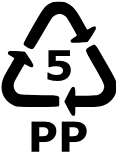 Polypropylene is a thermoplastic polymer made from propylene monomers and catalysts. It was first polymerized in 1951 by Philips petroleum scientists Paul Hogan and Robert Banks. In 1954 Italian chemist Giulio Natta perfected and synthesized the first polypropylene resin. By 1957 it was in widespread commercial production across Europe. Currently, it is one of the most commonly produced plastics in the world.
Polypropylene is a thermoplastic polymer made from propylene monomers and catalysts. It was first polymerized in 1951 by Philips petroleum scientists Paul Hogan and Robert Banks. In 1954 Italian chemist Giulio Natta perfected and synthesized the first polypropylene resin. By 1957 it was in widespread commercial production across Europe. Currently, it is one of the most commonly produced plastics in the world.
Because polypropylene can be combined with other polymers, the types of end uses can vary widely making it a versatile material with which to work. In 2016 global demand was 45 million metric tons, 30% of which was used in the packaging industry. Some other uses include automotive parts, furniture, dishwasher-safe plates, toys, carpets, upholstery, laboratory equipment and medical devices.
Today’s market size shows the estimated global sales of polypropylene in 2017 and projected for 2022. Polypropylene homopolymers are expected to be the fastest-growing type during this time period due to increasing demand in the automotive and medical industries, especially in the Asia Pacific region. The market for polypropylene is expected to grow the fastest in China, followed by India and South Korea from 2017 to 2022.
Geographic reference: World
Year: 2017 estimated and 2022 projected
Market size: $75.40 billion and $99.17 billion respectively
Sources: “The Polypropylene Market Size is Estimated at USD 75.40 Billion and Projected to Reach USD 99.17 Billion by 2022, at a CAGR of 5.6% Between 2017 and 2022,” CISION PR Newswire Press Release, February 1, 2018 available online here; “Everything You Need to Know About Polypropylene (PP) Plastic,” Creative Mechanisms, 2016 available online here; and “Polypropylene,” Wikipedia, April 23, 2018 available online here.
Image source: OpenIcons,”recycle-5-pp-recycling-plastic-98858,” Pixabay, April 1, 2013 available online here.
